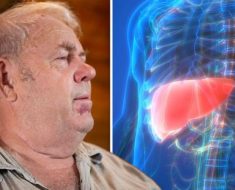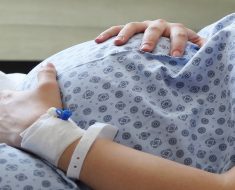In a recent study published in Emerging Infectious Diseases, researchers determined the zoonotic transmission potential of influenza A viruses (IAVs) H3 subtype of avian, equine, and swine origin.

Background
H3 subtype IAVs that infect human beings are antigenically different from those of horses, swine, and birds. Transmission of hemagglutinin (HA)-comprising H3 IAVs from animals to human beings could give rise to a pandemic since humans lack serological humoral immunity against such viruses, which can, therefore, rapidly replicate and spread in human tissues.
About the study
In the present study, researchers estimated the infection potential of bird-origin, horse-origin, and swine-origin H3 IAVs in humans.
Sera were obtained between August 2017 and January 2018 from 286 individuals residing in Belgium to evaluate the anti-HA1 antibody titers using VN and HI assays against avian-origin (mlBE18, mlOH18), swine-origin (swIN16, swMO15, swG17), and equine-origin (eqCH18) H3 IAVs. In addition, human infectivity of avian-origin chG19 (that caused outbreaks in poultry in Belgium in 2019), HK68 (the 1968 human pandemic virus), and dkUK63 (the presumed avian ancestor IAV of HK68) were determined.
Epidemiological-type data were analyzed to determine the zoonotic transmission risks. The team assessed the proliferative ability of IAVs in human airway epithelium cells reconstituted from primary cells of biopsy samples from six donor individuals (BD1, BD2, BD3, ND1, ND2, ND3). The study participants were born between 1921 and 2017 and did not have any history of known influenza vaccination or infections.
The IAVs were selected based on HA1 amino acid (aa) sequence homology and antigenic relatedness to IAV sequences downloaded from the GenBank database. Maximum-likelihood trees were constructed based on Jones-Taylor-Thornton modeling and the nearest-neighbour-interchange heuristic approach. The viruses were cultured in MDCK cells, and the team propagated only equine and avian viruses for HI assays in embryonated chicken eggs’ allantoic cavities, and all of them underwent ≤4.0 passages.
Results
Seroprevalence rates for swine-origin IAVs from North America were >51.0%, swine-origin IAVs from Europe ranged between 7.0% and 37%, and for bird-origin IAVs and equids were below or equal to 12.0%. Proliferation was efficient for swine IAVs from North America and those from Europe, intermediate for equine and poultry IAVs, and absent for avian IAVs. Zoonotic transmission risks were the greatest from swine-origin H3 IAVs. HK68 was found to be related closely to avian IAVs and showed 32 to 34/40 similar aa in antigenic sites and 93.0% to 96.0% homology.
Avian IAVs and HK68 showed <83% homology with horse-origin and swine-origin IAVs. IAVs of swine-origin shared 24 to 26 amino acids in the antigenic regions with the HK68 virus and shared 17 to 23 amino acids with bird-origin IAVs. Swine and equine IAVs were related most distantly with <78.0% homology and 18 to 21 aa in antigenic regions, whereas all bird-origin IAVs were related closely, and swine-origin IAVs showed considerable antigenic distances among one other. Fifty-one percent and 40.0% of sera showed HK68 seropositivity in HI assays and VN assays, respectively.
Seroprevalence and geometric mean titers (GMTs) were greater for individuals born prior to 1977 (71.0% and 65.0% in HI and VN assays, respectively, with GMTs >51) compared to those born between 1977 and 2017 (25.0% and 6.0% in HI and VN assays, respectively, with GMTs <18). The greatest seroreactivity was observed for individuals born between 1947 and 1966. For mlOH18, mlBE18 and dkUK63, <10.0% and <12.0% seropositivity was observed in HI assays and VN assays, respectively.
Differences in VN seroprevalence rates were significant for mlBE18 among individuals born between 1947 and 1956 (9.0%) and individuals born between 2007 and 2017 (0%), with GMTs <20 across ages. Seropositivity for chG19 was 2.0% and 1.0% in HI, and VN assays, respectively, with GMTs below the limit of detection across ages, and no anti-chG19 antibodies were detectable among individuals born between 1987 and 2017.
Only 1.0% and 3.0% of all sera showed eqCH18 seropositivity in HI assays and VN assays, respectively, and GMT values were under the limit of detection across ages. Of all individuals, 37.0% and 7.0% showed swG17 positivity in HI assays and VN assays, respectively.
Seropositivity and GMT values were greater for individuals born prior to 1997 (46% and 9.0% in HI and VN assays with GMTs >28, compared to those born between 1997 and 2017 (2.0% and 0.0% in HI and VN assays, respectively, with GMTs ≤11.0) with peaks for those born between 1967 and 1976. Seropositivity of 51.0% and 54% were noted for swIN16 in HI assays and VN assays, respectively.
Seropositivity and GMT values were greater for individuals born prior to 1997 (61% and 65% in HI and VN assays, GMTs exceeding 46) compared to for persons born between 1997 and 2017 (13.0% and 16.0% in HI and VN assays, respectively, with GMTs <14.0).
For swMO15, 76.0% and 72.0% seropositivity was observed in HI assays and VN assays, respectively. Half or more percent of individuals across ages showed seropositivity in HI assays and VN assays with GMTs ≥35, with the greatest seroreactivity among persons born between 1987 and 1996.
Seroprevalence rate differences were significant among individuals born between 1987 and 1996, persons born between 2006 and 2017 in the HI assays (97.0% versus 59.0%) and persons born between 1947 and 1956 in the VN assays (93.0% versus 53.0%). HK68 proliferated to titers ≤10.0 log10 median tissue culture infectious dose (TCID50) per mL in the airway cells except those of ND2.
Comparable titers were observed for swIN16 and swG17 in nasal and BD1 tissues. The eqCH18 virus proliferated efficiently in BD3, ND1, and BD1 tissues, and peak titers were 2.0 to 3.0 log10 TCID50 per mL lesser than titers for swG17, swIN16, and HK68. ChG19 proliferated with titers ≤4.0 log10 TCID50 per mL in bronchi cells of BD3 and was detected in BD1 and ND1 tissues at 4.0 dpi. The mlOH18, mlB18, and dkUK63 viruses had titers <2.2 log10 TCID50 per mL at four dpi in BD1 and ND1 tissues, and titers of 3.0 log10 TCID50 per mL were observed for swMO15 at 2.0 dpi in ND2 tissues.
Overall, the study findings showed a higher potential for swine IAVs to infect humans.
- Vandoorn E, Stadejek W, Leroux-Roels I, Leroux-Roels G, Parys A, Van Reeth K. Human immunity and susceptibility to influenza A(H3) viruses of avian, equine, and swine origin. Emerg Infect Dis. 2023 Jan. doi: https://doi.org/10.3201/eid2901.220943 https://wwwnc.cdc.gov/eid/article/29/1/22-0943_article
Posted in: Medical Science News | Medical Research News | Disease/Infection News
Tags: Amino Acid, Antibodies, Antibody, Biopsy, Bronchi, Horse, immunity, Infectious Diseases, Influenza, Pandemic, Proliferation, Tissue Culture, Virus

Written by
Pooja Toshniwal Paharia
Dr. based clinical-radiological diagnosis and management of oral lesions and conditions and associated maxillofacial disorders.
Source: Read Full Article





